A: Since sunscreens are promoted to protect the skin, it may come as a surprise that many of their ingredients are linked to potential hormone disruption, cell damage, and increased risk of skin cancer. When choosing a sunscreen, key ingredients to avoid include oxybenzone, retinyl palmitate (vitamin A), and parabens. Safer ingredients to choose are zinc oxide and titanium dioxide, which are mineral compounds that act to reflect, scatter, and absorb UV rays.
In addition, sunscreen inhibits the body’s natural production of vitamin D, a vital nutrient that plays a role in preventing skin cancer, among other benefits. Diet, supplementation, and moderate sun exposure are appropriate ways to optimize vitamin D levels.
For more information, and to check the safety of your sunscreen, visit the 2015 Guide to Sunscreens from Environmental Working Group.
As seen in the Cloverdale Reporter...

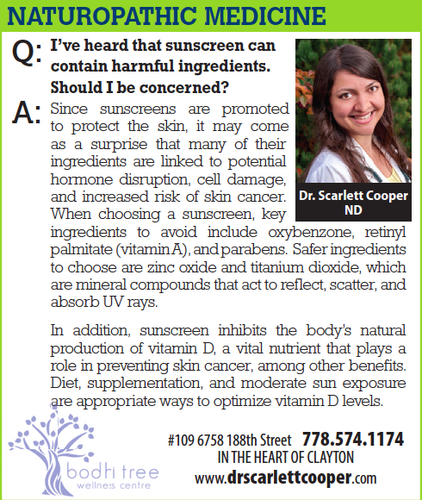

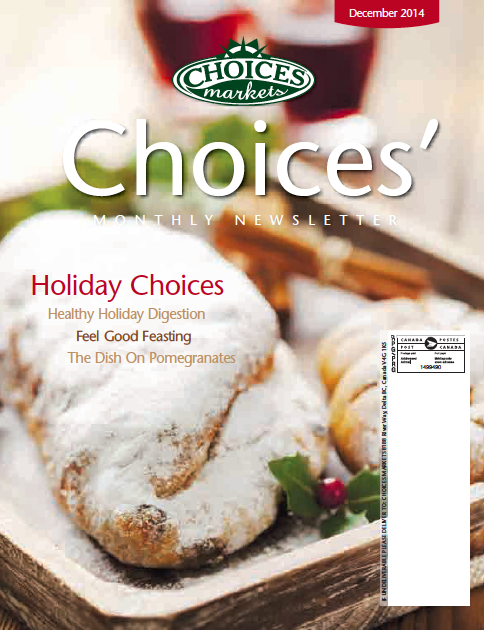
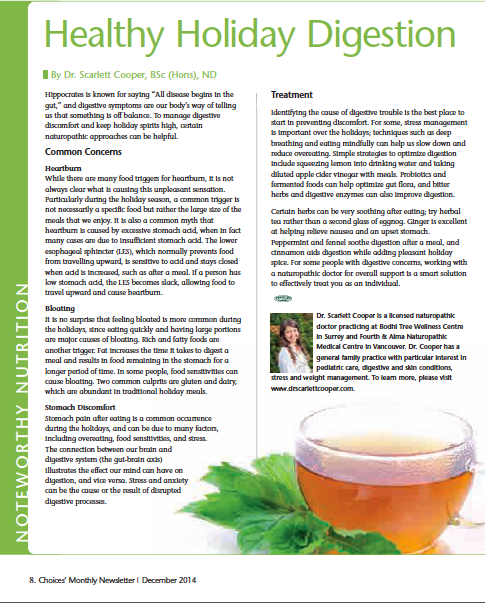

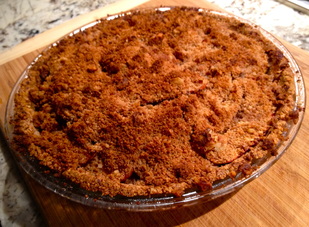
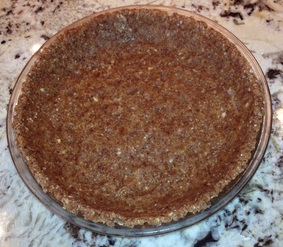
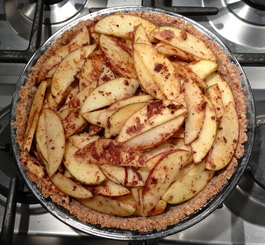
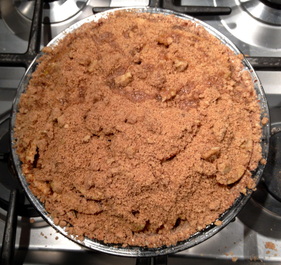
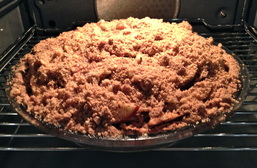
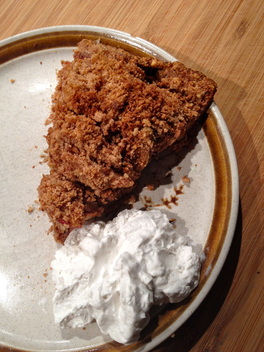
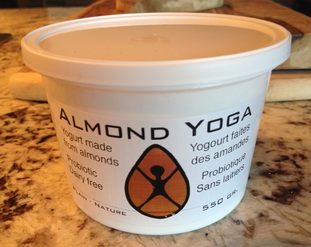
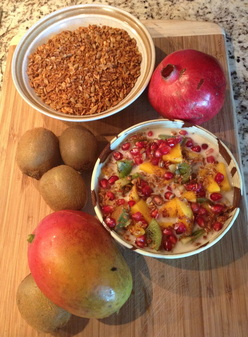
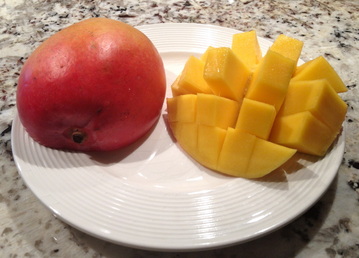
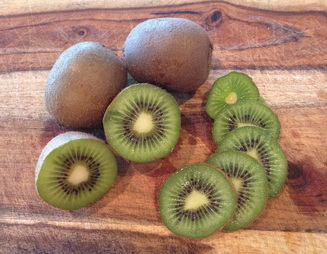
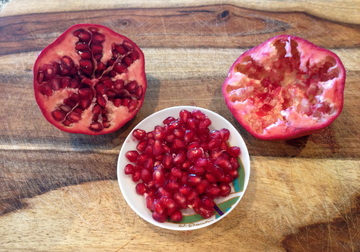
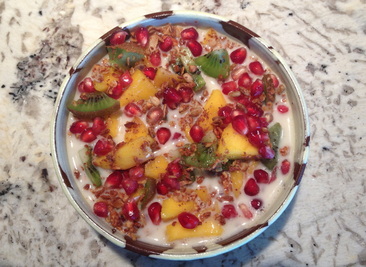

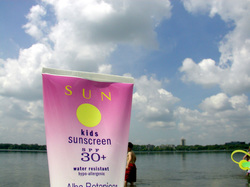
 RSS Feed
RSS Feed